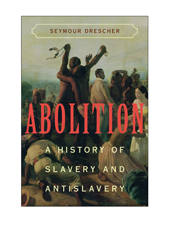Book contents
- Frontmatter
- Contents
- Preface
- PART ONE EXTENSION
- PART TWO CRISIS
- PART THREE CONTRACTION
- 9 British Emancipation
- 10 From Colonial Emancipation to Global Abolition
- 11 The End of Slavery in Anglo-America
- 12 Abolishing New World Slavery – Latin America
- 13 Emancipation in the Old World, 1880s–1920s
- PART FOUR REVERSION
- Index
- References
13 - Emancipation in the Old World, 1880s–1920s
Published online by Cambridge University Press: 04 August 2010
- Frontmatter
- Contents
- Preface
- PART ONE EXTENSION
- PART TWO CRISIS
- PART THREE CONTRACTION
- 9 British Emancipation
- 10 From Colonial Emancipation to Global Abolition
- 11 The End of Slavery in Anglo-America
- 12 Abolishing New World Slavery – Latin America
- 13 Emancipation in the Old World, 1880s–1920s
- PART FOUR REVERSION
- Index
- References
Summary
Exactly a century after the first great stirrings of abolition in Britain, slavery had been legally abolished by Brazil's “Golden Law.” In a broad swath of the Old World, however, stretching from the Atlantic coast of Africa through the eastern reaches of the Indian Ocean World, the institution of slavery remained both intact and robust. When the Americas were closed to enslaved Africans in the 1850s and 1860s, the institution was attaining its maximum extension within Africa. As noted in chapter 10, the World Antislavery Convention had been informed that there were 6 to 8 million slaves in India. Another contemporary writer placed the figure as high as 16 million or about one-tenth of the subcontinent's population. At that moment, India probably contained more people in servile status than any other political unit in the world.
Old World servitude was not only larger and more widespread than its New World counterpart, but more diverse as well. In India, there was a range of servile statuses, some hereditary, some temporary, that Westerners subsumed under the rubric of slavery. These bondsmen and women occupied a wide range of niches, from those analogous to New World occupations in agriculture, industry, and households to eunuchs, concubines, courtiers, and military officers, without parallels in the Americas. Slaves were still being recruited through interregional slaving and assuring the institution's survival. The employment of slave sailors probably increased during the second third of the nineteenth century.
- Type
- Chapter
- Information
- AbolitionA History of Slavery and Antislavery, pp. 372 - 412Publisher: Cambridge University PressPrint publication year: 2009



